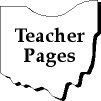 |
Wetlands
Are Wonderlands! |
 |
 |
Wetlands
Are Wonderlands! |
 |
Summary: Wetlands Are Wonderlands! is actually five activities in one inquiry. In How Does Energy Travel Through Food Chains?, students use an Online Wetlands Ecosystem image to hypothesize food chain relationships within a wetland. In How Does Energy Travel through Food Webs?, students take the Food Chains activity one step further by creating, in teams, food webs that describe interdependence within a wetland ecosystem. In Can ONE change in a Food Web Affect the Entire Community?, students explore the story Wolf Island by Celia Godkin to better understand how one change in a food web can be felt throughout the community. In What Is the Pyramid of Energy?, students are introduced to the Pyramid of Energy. They learn how to identify consumer levels within a food chain/web. They also learn that most of the energy at each level is used for life processes and is not available to be passed on to the next level of consumer. In What Is the Role of Energy and Matter in an Ecosystem?, students learn that although an ecosystem constantly recycles its matter, it must also constantly receive new energy to remain in balance. In How Do Humans Fit into the Pyramid of Energy?, students connect the foods they eat to the Pyramid of Energy in order to discover their consumer level.
Ready...
Get Set...
Ready...
Get Set...
Day 3: Wetlands Are Wonderlands and Wolf Island (45 min.)
Ready...
Get Set...
Go!!!
Day 4: What Is the Pyramid of Energy? (45 min.)
Ready...
Get Set...
Go!!!
Ready...
Get Set...
Go!!!
Ready...
Get Set...
Go!!!
| Food Item |
Pyramid
Level |
| salad | producers (comes from plants) |
| cheeseburger | *primary consumers (meat comes from cattle) |
| milk | primary consumers (milk comes from cows) |
| macaroni and cheese | *producers (macaroni comes from wheat) |